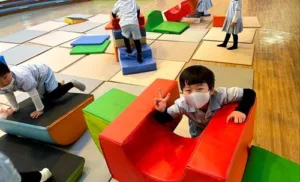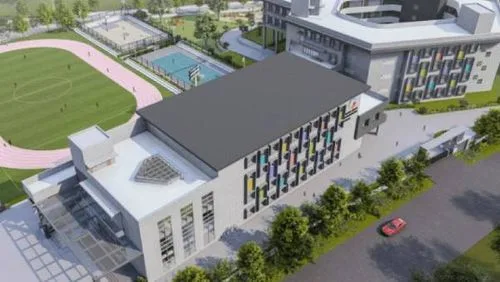Download our FREE Academic Calendar now! 📚 Start your child’s journey to success.
Table of Contents
- Best Features of the Modern Indian School Education System
- Advantages of the Indian Education System
- High Schools in Bangalore Are More Inclined Towards Syncing Education To Global Standards
- Conclusion
The Indian School education system is the 11th largest in the world, with more than 100 million students enrolled in thousands of colleges and universities.
The education system in India is complex, with each state having its own official state education board/university governing body along with other local authorities responsible for regulating schools.
India has made strides in improving literacy rates and expanding access to primary and secondary education across top cities and towns in the country.
The history of education in India dates back thousands of years to ancient India. Some of the earliest known formal educational institutions date back to the Vedic period in India (1700-1300 BC).
The Vedas, the oldest scriptures of Hinduism, had an embedded education system, with texts that were memorized by students since ages. Education was
imparted on the basis of what each student chose to specialize in, according to their interests, abilities and understanding.
The Indian education system has evolved tremendously over the years. The Indian School system has changed from a traditional and rote-based learning system to a more modern and innovative one. This article provides a brief overview of the best features of the modern Indian education system.
Best Features of the Modern Indian School Education System
The Indian education system is divided into 5 categories: Preschool education, Primary level education, Secondary level education, Senior secondary level education, and Graduate and above level education.
The first three levels are compulsory for all children aged 6 to 14 years. At the pre-primary level, children learn the basics such as alphabets, numbers and colors as well as social skills.
After their 10+2 (secondary schooling), a person can pursue bachelor, master and an alternative specialization degree in several fields of their selection.
There are government-funded schools and there are also private boards which conduct a high school or intermediate exams like the CBSE Board, ICSE, NOIS, etc, and there are international board curricula like the IB and the Cambridge IGCSE curriculum that many international schools provide.
Advantages of the Indian Education System
Modern education system of India has many advantages. Some are mentioned below which are the best part of the Indian education system.
Compulsory Education
Compulsory Education is one of the best features of the modern education system in India. Every child has to pass class 10th to get employment or higher studies. As a result, you will find that all poor children are getting equal opportunity to learn in school.
Affordable Fees Structure
The Fee structure of Indian schools is very much affordable when compared to other countries in the world. Due to this reason, every parent can fulfill their dream of giving their child the best education and a secure future.
Advancement in Teaching Methods
Teachers now discourage children from the rote-learning method and use new and improved ways to impart education. There are modern spaces inside state of the art campuses of school that enable children to engage in a more practical learning journey that will ensure they understand key concepts with ease.
Education is More Accessible Due to Technological Advancements
The pandemic has brought about a revolution in the field of education. There are new and innovative platforms where one can pursue higher education and the geographical constraints are not a factor anymore.
Technology has made it possible to provide virtual classes so that students complete their education on time.
Indian Syllabus Covers a Vast Area of Education
The modern curriculum comprises a holistic learning approach and doesn’t just limit itself to core subjects. Schools now tend to focus more on acquiring skills in technology, communication, critical-thinking and problem solving.
There is also enough emphasis on cultural studies and society. These aspects help children understand the problems that many communities face and they get an idea as to how they can use their knowledge for the betterment of the same.
There is also equal emphasis on extracurricular activities and co-curricular activities to help build a student’s personality and work upon his innate strengths.
High Schools in Bangalore Are More Inclined Towards Syncing Education To Global Standards
The curricula of top high schools in Bangalore are curated with unique pedagogies that aim at bringing a global standard in education to help students acquire diversity in their perspectives.
This has also eased transition into top universities across the globe and there is an increased amount of global acceptance of students from the Indian Schools.
How can the Government and other stakeholders in the education industry improve the system to make India one of the best countries to pursue education.
● The government should actively take part in the upliftment of pre-primary and primary schools and extend the number of schools to include every small village in the country.
● There should be more scholarships introduced in private schools and financially weak people should be provided with educational loans at low interest rates to enable their children to pursue higher education.
● Parents who belong to the lower strata of society should be educated about the Do’s and Don’ts of their child’s upbringing. They should be guided with the right information as to how and where to pursue the right kind of education for their children.
Conclusion
Not just high schools in Bangalore, but education of all levels has the true potential to reach great heights all over the country.
India already has the world’s largest higher education system with over 1000 universities and its presence in the global education arena will ensure that it reaches newer heights, making education in India one of the best things for its school going children and its youth population.



































